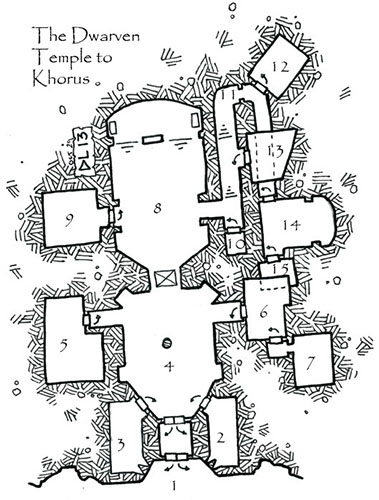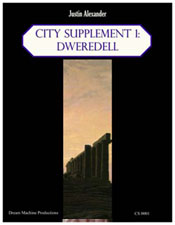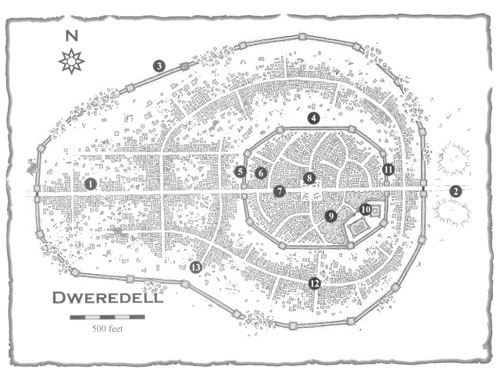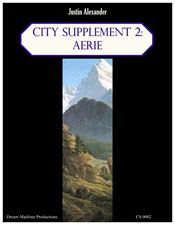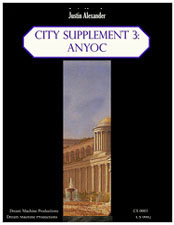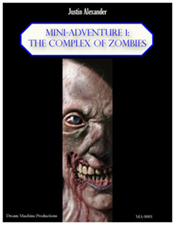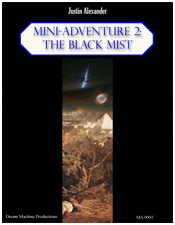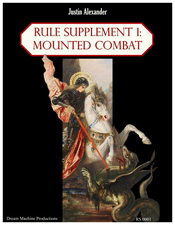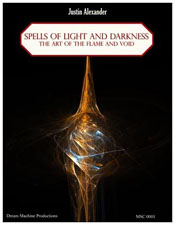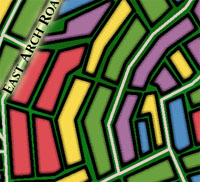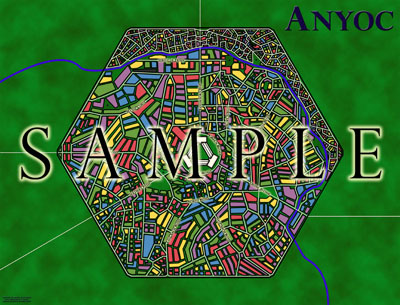
When I finished putting everything together, this was the map I had created. I’m fairly proud of it. (Which would explain why I’ve written a four part series on its creation.) It’s not the best map of a fantasy city ever published, but for a city supplement that can be purchased for as little as $7.99, I think it’s fairly impressive.
Of course, I’m biased. (And shilling.)
(What is the best map of a fantasy city every published? For my money, Ed Bourelle’s map of Ptolus wins that distinction hands-down. It’s a beautiful work of art, featuring layered geography; individual buildings; crystal-clear information clarity; and an enormous amount of utility. Quantity isn’t the same thing as quality, but it’s notable that I have a version of the Ptolus map hanging on my wall which is more than six and a half feet long. And, even at that immense size, it remains an astonishingly beautiful piece. The map of Anyoc, by contrast, is designed to be viewed at just 21″ x 16″ — which is big, but not huge.)
One of the things I love about mapping is the ability it has to provide a conduit for inspiration. Some of the best ideas I’ve ever had have been the result of my brain churning something out because there was a blank piece of graph paper that needed to be filled.
Designing the map for Anyoc was no exception.
Let me back up for a second and talk about the history behind City Supplement 3: Anyoc.
Anyoc was originally created back in 2001 as the setting for an adventure module. A playtest draft was completed and playtested (which is reflected in the playtest credits to be found in the published book), but the project was cancelled before a final draft was completed — partly because the publisher was already moving away from D20 modules and partly so that I could focus on a supplement called Gods & GoddessesTM (which was also cancelled before it was completed).
In 2002, Campaign Magazine started publishing my new column: Cities of Fantasy. Each issue of the magazine featured a complete fantasy city designed by me. I wrote two original columns, recycled and expanded the unpublished Anyoc material for the third, and started work on three more columns.
Unfortunately, after publishing a single column (featuring the city of Dweredell), Campaign Magazine went out of business. So the material was shelved again.
And shortly thereafter I got tired of my projects being cancelled by other people for reasons that had nothing to do with the work itself, so I took a hiatus from the roleplaying industry and when I came back I founded Dream Machine Productions.
All of which is to say that City Supplement 3: Anyoc was originally going to look a lot like City Supplement 1: Dweredell — a shorter, cheaper book detailing roughly a dozen locations.
But as I was working on the map, a couple of things happened: First, I kept getting struck by inspiration as I considered the various stories behind the buildings and streets I was drawing. Second, I realized that there was a serious mismatch between the detail of the map and the detail of the gazetteer. It just didn’t make a whole lot of sense to have a poster-size map serving up only a handful of detailed locations.
So, despite the fact that the entire book had already been laid out and proofread, I decided to scrap the existing gazetteer and rewrite it basically from scratch. At the time, I was appearing as Inspector Colquhoun in The Hollow by Agatha Christie. As the requisite detective in the story, I spent most of the second act onstage, but during the first act I was just sitting backstage waiting for the murder to happen.
So I would sit in the dressing room with my laptop, busily working away with fresh inspiration on an expanded gazetteer for the city. The final result more than tripled the number of locations detailed.
And that’s how the map of Anyoc was both my creation and my muse.

